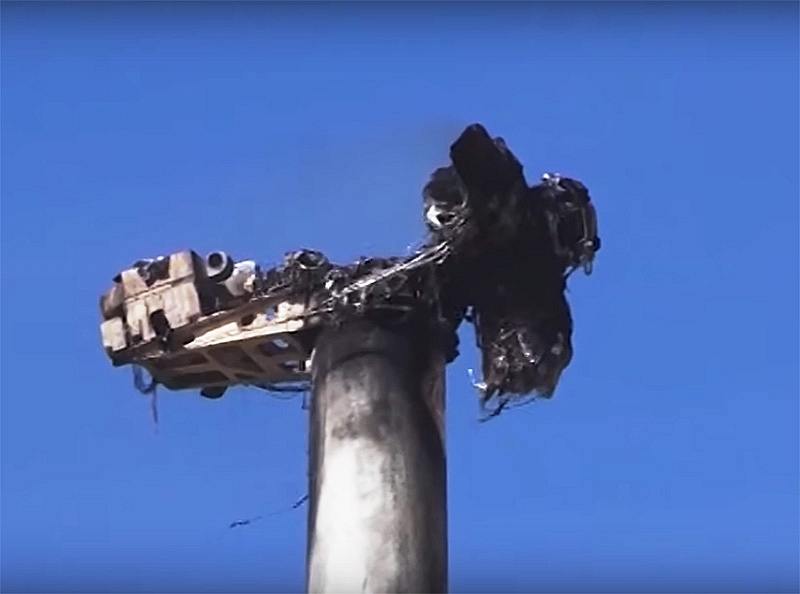Wind farm blaze puts O&M activities in the spotlight
 |
| Wind farm blaze puts O&M activities in the spotlight - illustration photo |
An investigation is underway to find the root cause of the blaze, which occurred at Phong Dien 1 wind farm in the south-central province of Binh Thuan. The farm is owned by Vietnam Renewable Energy JSC (REVN), which has been forced to halt all other turbines at the project to serve the investigation.
No injuries were reported, but damage is believed to amount to over $3 million. According to chairman of the Binh Thuan Wind Power Association Bui Van Thinh, the unexpected issue has created new burdens for power businesses as more costs are expected to surface. “The fire at this wind farm project is the first case in Vietnam and so it is also a lesson for wind power investors,” said Thinh, who suggested that investors need to strictly follow the manufacturer’s operation and repair procedures, no matter the expense – the cost of such procedures can accounts for around 2 per cent of the value of the turbine.
REVN’s wind farm was developed in 2009 with technical support coming from Fuhrlaender, a German wind turbine producer. The company has not been active since 2013, and VIR was unable to reach a company representative.
Such incidents at wind turbines not only lead to a loss of business continuity but most importantly are a critical safety issue, especially at a time when wind power development has become fast-paced over the last few years, and with technical operation and maintenance (O&M) of turbines remaining heavily reliant on the engineering teams of branded suppliers.
Echoing Thinh’s viewpoint, Poul Bach Hansen, head of Renewable Energy at independent insurance broker Price Forbes & Partners Ltd., said, “The first concern would be root cause and access to a replacement, as the latter will be a challenge. Both need to be looked into simultaneously. Wind turbine generator fires happen occasionally and the causes are typically lightning or mechanical problems, or a combination. Given the age it is likely to be mechanical more than anything.”
Hansen added the interesting part is therefore how the O&M contract was set up, how it has been performed, and what form the service manual and caps on liability are. Issues point out the need for integration between insurance and availability guarantees in the O&M contracts. “From an insurance terms perspective, it will be interesting to see if it is insured and on what terms,” said Hansen. “Often owners have used a combination of external causes and in combination with a mechanical breakdown insurance, which often causes an interphase problem.”
Related to O&M, industry experts agree that this is not the first incident regarding wind turbine generator fires and will definitely not be the last. Genuine reasons should be made available to learn from, and to help put preventative measures in place to prevent similar incidents. Besides that, some said that having correctly-trained people is the top priority.
There are no detailed data on incidents at wind turbines in Vietnam, but global trends would have it that as more turbines are built, more accidents will occur. Numbers of recorded accidents reflect this, with an average of 44 accidents per year during 1999-2003 inclusive; 94 accidents annually between 2004 and 2008; 156 accidents each year in the 2009-2013 period, and 173 accidents per year during 2014-2018 inclusive, according to the Caithness Windfarm Information Forum from Scotland.
Vietnam is one of the most exciting wind power markets in Southeast Asia, and has developed into a hotspot of development for both onshore and offshore wind. It is expected to deploy over 1GW of onshore and offshore wind power capacity by 2021, as it boasts one of the highest potentials in the region for both technologies, according to a June 2019 report from the Global Wind Energy Council.
What the stars mean:
★ Poor ★ ★ Promising ★★★ Good ★★★★ Very good ★★★★★ Exceptional
 Tag:
Tag:
Related Contents
Latest News
More News
- Heavy industries set for pilot greenhouse gas quotas (December 25, 2025 | 10:00)
- Swedfund invests in MSME growth and climate action in Vietnam (December 19, 2025 | 11:42)
- GreenYellow brings solar energy to light up remote schools in Tuyen Quang province (December 19, 2025 | 08:00)
- Charge+, Grab partner to develop EV charging network in Vietnam (December 18, 2025 | 17:11)
- Linking sci-tech and innovation to Vietnam’s net-zero future (December 18, 2025 | 14:31)
- Driving double-digit growth through green and circular transformation in Vietnam (December 17, 2025 | 09:00)
- Standard Chartered and ACCA deepen collaboration to develop Vietnam’s talent for a sustainable future (December 15, 2025 | 18:18)
- Schaeffler reports strong early output from Dong Nai solar project (December 12, 2025 | 15:16)
- Forestry conference highlights biodiversity and sustainability goals (December 09, 2025 | 13:35)
- Home Credit honoured among top 10 sustainable companies in trade and services (December 09, 2025 | 12:18)























 Mobile Version
Mobile Version